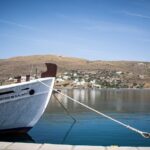By 1912, the Christian states of the Balkans were seriously considering the possibility of resolving the Eastern Question by war against the Ottoman Empire. On August 26 / September 8, King Ferdinand of Bulgaria convened a council of the crown, which decided to start military operations immediately. A few days later, Bulgaria and Montenegro reached a verbal agreement, which provided for the payment of a large sum by the former, to finance the Montenegrin war effort.
At the same time, Serbia, under Prime Minister Nikola Pasic, also decided to participate in the war against the Ottoman Empire. On September 17/30, Sofia, Belgrade and Athens declared general conscription. On September 24 / October 7, Montenegro severed diplomatic relations with the Porte and three days later, on September 27 / October 10, King Nicholas declared war on the Ottoman Empire.
The intervention of the Great Powers to prevent the outbreak of a war did not bear fruit.
The intervention of the Great Powers to prevent the outbreak of a war in the Balkans did not bear fruit. On the evening of October 3/16, the Porte recalled its ambassadors from Sofia and Belgrade. The next day, Bulgaria and Serbia declared war on the Ottoman Empire. Pyli’s attempt to detach Greece from the Balkan Alliance by giving her Crete failed. On October 5/18 Greece declared war on the Ottoman Empire. The time for the liberation of Macedonia, Epirus, Crete and the Aegean islands from the Greek armed forces had arrived.
Immediately after the declaration of war, the Thessalian Army crossed the Greek-Ottoman border without encountering any resistance, crossed Meluna and advanced towards Tsaritsani. On the same day, the armored cruiser “G. Averof”, the pride of the Greek fleet, in the presence of King George I and Prime Minister Eleftherios Venizelos. The next day, the first battle of the Greek army in the First Balkan War took place. The Army of Thessaly under the orders of the Commander-in-Chief Crown Prince Constantinos and the Chief of the General Staff Panagiotis Daglis managed to capture Elassona, after a four-hour battle. The Ottoman troops were forced to retreat north along the road leading to Servia Kozani.
Although the Ottoman defenders of Sarandaporos were in a more advantageous position, the Greek soldiers managed to capture the strait.
The advance of the Greek army continued on October 7/20 with the occupation of the heights north of Elassona. The Ottoman forces retreated to the straits of Sarandaporos. On October 9/22, the Greek forces launched their attack to capture the strait of Sarandaporos. Although the Ottoman defenders of Sarandaporos were in a more advantageous position positioned on the heights, the Greek soldiers managed to capture the strait on 10/23 October. The road to the liberation of Western Macedonia was now open.
The difficult conditions that prevailed on the battlefield were described by the heir Constantinos, in a letter to his mistress Paola, on October 10. “I had been standing for almost two whole days, from time to time under a rain that blotted out the whole landscape, so hard was it raining […]. At four o’clock I went down to the plain to see the wounded on the stretchers and a little house and stable where they had been put. The sight was sad, heartbreaking and hopeless, to see the pain of these men who had fought so bravely a few minutes ago, the arrangements were poor, to see them lying some in the mud, their uniforms soiled and bloodied, almost I cried, I’m crying now as I write to you” (Macedonian Studies Society, Hours of Freedom, Balkan Wars, 100 years, From Meluna to Thessaloniki, “The Daily”, March 2012, p. 46).
Column editor: Myrto Katsigera, Vassilis Minakakis, Antigoni-Despina Poimenidou, Athanasios Syroplakis




